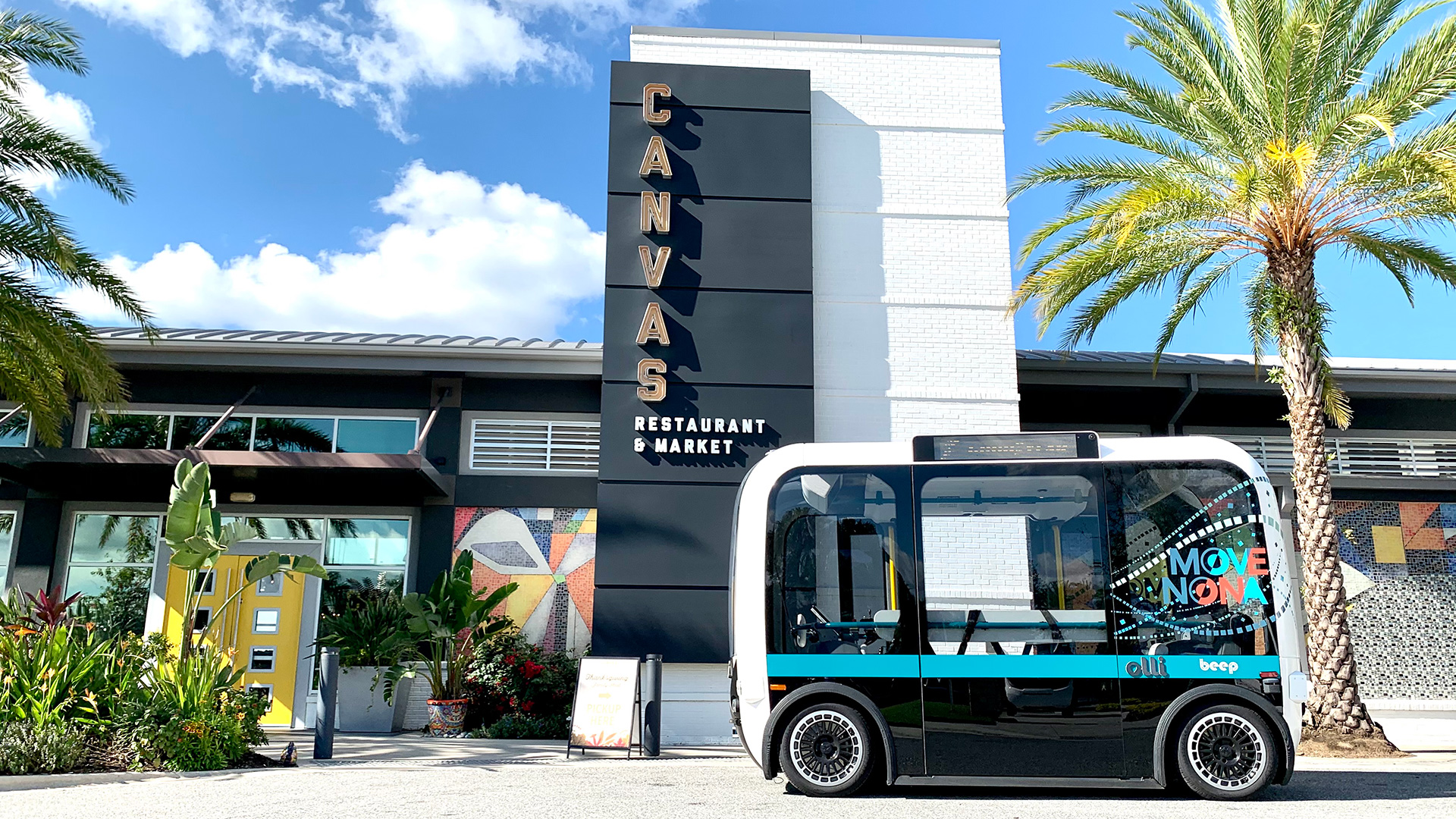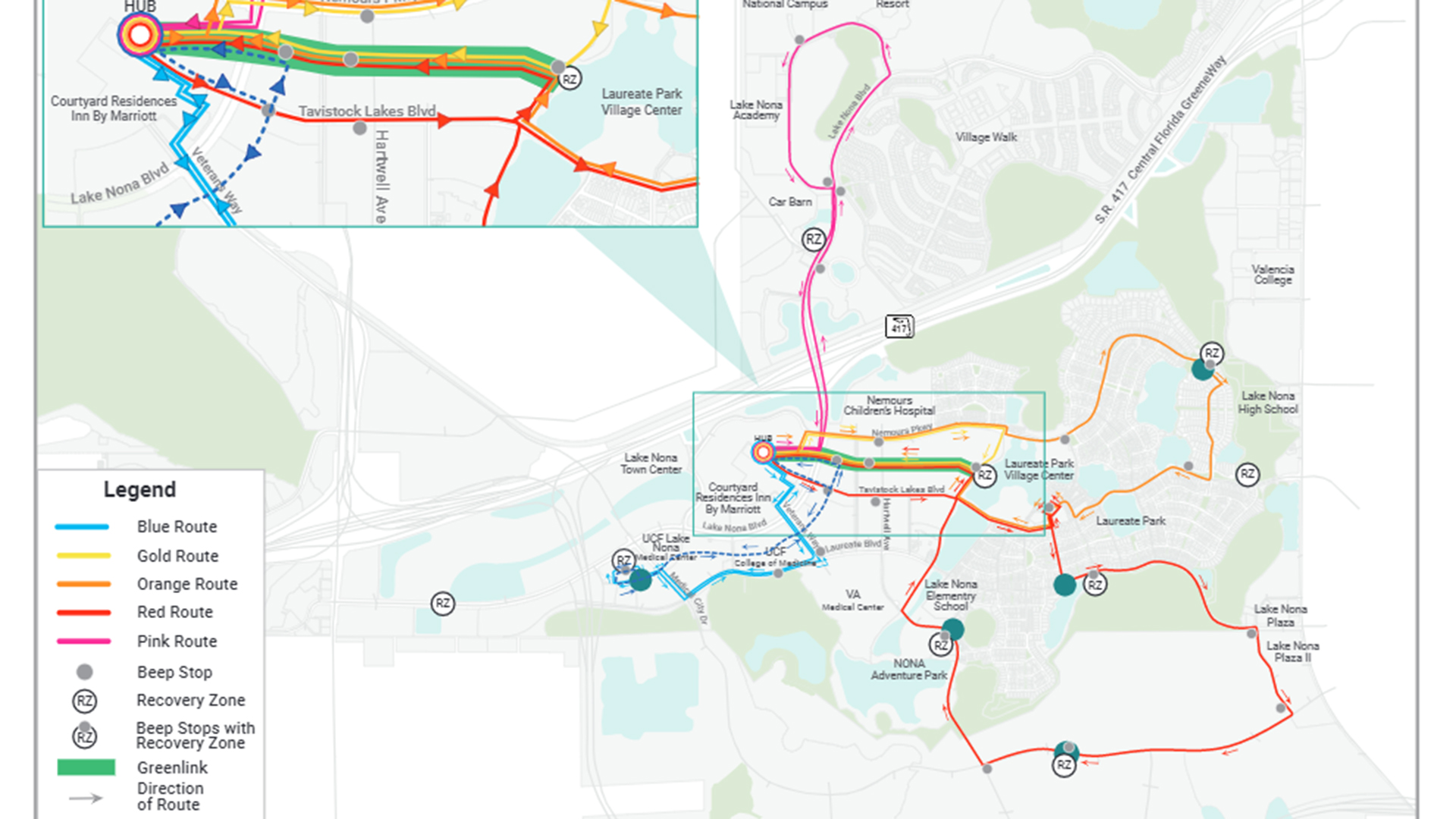January 20, 2021
You’re out on the town with friends, and your next destination is just out of a walkable distance. How will you get there? Do you find a bikeshare station? A motorized scooter that can zip you off to your next stop? What if you and your friends were presented with a vehicle that drives itself? This is becoming a real choice for residents and visitors of Lake Nona, Florida.
In the summer of 2019, Kittelson assisted Tavistock Development Company and Orange County in submitting for a BUILD grant for a multimodal network throughout Lake Nona, a community within the city of Orlando. This project would consist of a large trail network for pedestrian/bicycle travel, scooters, and other forms of micro-mobility travel along with up to 20 automated vehicles (AVs). Orange County was awarded $20 million for this project, which will maximize mobility and convenience of on-demand services for the 15,000 residents of Lake Nona and their visitors.
As part of this network, Tavistock Development has partnered with Beep to bring one of the largest automated shuttle fleets in the world within a single community to Lake Nona. In September 2019, Lake Nona launched an initial fixed route between the Lake Nona Town Center and Laureate Park, serviced by two 10-passenger automated shuttles that operate up to 15 miles per hour. Now, there are eight shuttles running across four routes, with more routes coming soon.

Photo courtesy of Beep.
We at Kittelson have been working with Tavistock and Beep to design routes and infrastructure to support a full fleet of new vehicles.
This first-of-a-kind project brings with it many unique considerations, including the electric vehicles’ capabilities, their optimal travel routes, and even what new infrastructure is needed to develop the most optimal and efficient routes. One example is the need to plan for a bridge that will pass over a six-lane roadway for the shuttles to cross over. This new structure eliminates the many challenges that would come with building accommodations for a low-speed vehicle to cross multiple traffic lanes, but also required consideration of how to handle interfaces with the adjoining cycle track.

While every project presents different challenges, this one takes problem-solving a step further. This project is truly unique as it is one of the first large-scale automated shuttle deployments in the United States. This means standards and guidelines do not yet exist either locally or federally. This provides a challenging and groundbreaking experience for designers, engineers, and planners who will rely on each other through collaboration with a solutions-focused mindset.
The implementation of automated vehicles in Lake Nona will likely create a reference point for the future, as new standards are being developed as planning progresses. Adam Burghdoff, a principal engineer with Kittelson who is leading the project, notes this project will set the stage for future studies and research to be done.
“The grant stipulations say you need to monitor the before and after conditions to measure progress. Our results and analysis will be available for others to learn from,” said Adam. “We’re not creating guidelines, we’re not creating policy, but that doesn’t mean that the work that is done here couldn’t help to set an agency up for that.”
The full fleet of automated vehicles will deploy in two years, bringing convenience and new mobility to the Lake Nona community. You can read more about this project here, and feel free to reach out to Principal Engineer Adam Burghdoff, Senior Engineer Abby Morgan, Senior Principal Planner Gibran Hadj-Chikh, or Senior Principal Engineer Wade Walker to learn more about what we’re working on!
